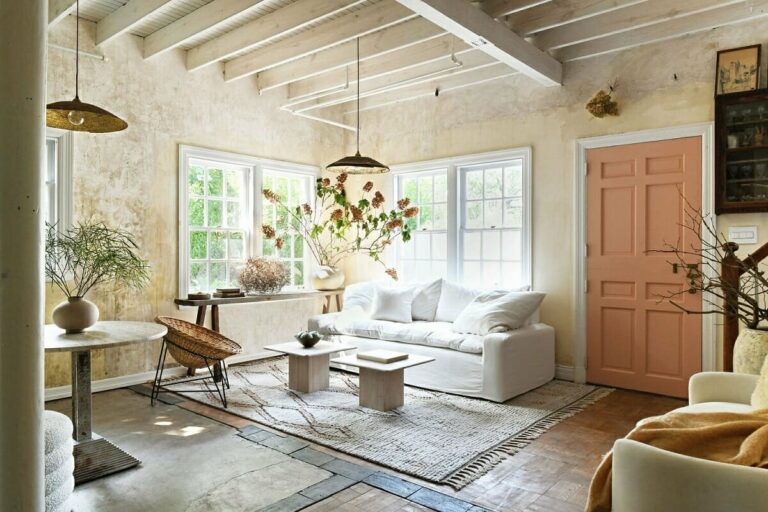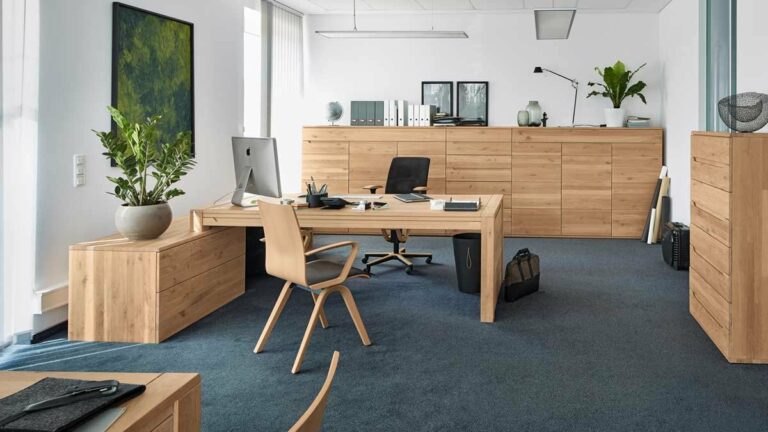How to Incorporate Eco-Friendly Furniture into My Existing Home Decor?
How to Incorporate Eco-Friendly Furniture? Incorporating eco-friendly furniture into your existing home decor is easier than you may think. By making a few conscious choices, you can create a sustainable living space that not only looks beautiful but also promotes a greener lifestyle. So, how can you incorporate eco-friendly furniture into your existing home decor? Let’s explore some simple yet effective strategies that will seamlessly blend sustainability and style.
How to Incorporate Eco-Friendly Furniture into My Existing Home Decor?
In today’s world, where sustainability and environmental consciousness are gaining importance, incorporating eco-friendly furniture into your existing home decor is a great way to reduce your carbon footprint and contribute to a healthier planet. By making conscious choices and opting for sustainable materials and manufacturing processes, you can transform your living space into an eco-friendly haven. This article will guide you through the process of incorporating eco-friendly furniture into your home decor, ensuring a stylish and sustainable living environment for you and your family.
1. Understand the Concept of Eco-Friendly Furniture
Before diving into the process of incorporating eco-friendly furniture into your home decor, it’s essential to understand what eco-friendly furniture means. Eco-friendly or sustainable furniture is made using materials and practices that have minimal impact on the environment. It focuses on reducing waste, using renewable resources, and promoting ethical manufacturing processes. Familiarize yourself with the core principles of eco-friendly furniture to make informed decisions.
Choose Sustainable Materials:
When selecting eco-friendly furniture, prioritize sustainable materials such as reclaimed wood, bamboo, cork, or recycled plastic. These materials are renewable, help reduce deforestation, and minimize the extraction of natural resources. Additionally, they often possess natural durability, ensuring long-lasting furniture pieces.
Look for Certifications:
Certifications like Forest Stewardship Council (FSC), Cradle to Cradle (C2C), and Global Organic Textile Standard (GOTS) provide assurance that the furniture meets specific sustainability criteria. Look for these certifications while shopping for eco-friendly furniture to ensure legitimacy and verify the environmental claims made by manufacturers.
Consider the Manufacturing Process
Apart from the materials used, pay attention to the manufacturing process. Opt for furniture made using low or zero VOC (volatile organic compounds) finishes, water-based adhesives, and non-toxic dyes. By doing so, you’ll ensure that your furniture doesn’t release harmful toxins into your home, leading to improved indoor air quality.
2. Assess Your Existing Home Decor
Before incorporating eco-friendly furniture into your home decor, it’s important to assess your current decor style and layout. Understanding your existing space will help you make informed decisions and ensure a harmonious blend of eco-friendly pieces with your overall aesthetic.
Identify the Style and Theme
Take note of the style and theme of your current home decor. Is it modern, minimalist, rustic, or eclectic? Understanding your decor style will guide you in selecting eco-friendly furniture pieces that seamlessly fit into your existing design scheme. Consider the color palette, patterns, and textures used in your current decor for a cohesive and visually appealing result.
Evaluate the Layout and Space
Assess the layout and available space in your home. Analyze the dimensions of the rooms, architectural features, and any specific furniture placement requirements. This evaluation will help you determine the size and types of eco-friendly furniture pieces that will work best in your space without compromising functionality or flow.
3. Create a Budget and Prioritize Sustainable Investments
Once you’ve assessed your existing decor and understand the type of eco-friendly furniture you need, it’s time to create a budget and prioritize your sustainable investments. Eco-friendly furniture can sometimes be pricier due to the higher cost of sustainable materials and ethical manufacturing practices. However, by planning and prioritizing, you can gradually transform your home without breaking the bank.
Analyze Your Needs and Wants
Make a list of the eco-friendly furniture pieces you need versus the ones you desire. Focus on essential items, such as a sustainable bed frame or dining table, before considering additional decor pieces like accent chairs or decorative shelving. This approach ensures that your budget is allocated to the most impactful pieces first.
Compare Prices and Brands
Research different brands and compare prices to find the best eco-friendly furniture options within your budget. Look for sales, discounts, or clearance sections where you might find quality sustainable pieces at reduced prices. Don’t forget to factor in shipping costs and any additional services like assembly or installation.
Consider Secondhand or Upcycled Options
To further reduce costs and promote sustainability, consider exploring secondhand or upcycled furniture options. Thrift stores, online marketplaces, and local classifieds often have unique, pre-loved pieces waiting to be given a new life in your home. Additionally, upcycling existing furniture by refinishing or repainting can transform them into eco-friendly statement pieces.
4. Focus on Versatile and Multi-functional Pieces
When selecting eco-friendly furniture, prioritize versatile and multi-functional pieces that can adapt to changing needs and spaces. This approach minimizes the number of furniture items required, reducing consumption and waste.
Convertible Sofas and Daybeds
Consider investing in convertible sofas or daybeds that can serve multiple purposes. These pieces can be used as seating during the day and transformed into beds for overnight guests. The versatility allows you to maximize the functionality of a single piece of furniture.
Multipurpose Storage Solutions
Opt for storage solutions that serve both functional and aesthetic purposes. Look for eco-friendly credenzas, ottomans with hidden compartments, or coffee tables with built-in storage. These pieces not only provide extra storage space but also help declutter your home by keeping essential items organized and out of sight.
Foldable or Portable Furniture
Foldable or portable furniture is a great option for small spaces or homes with changing needs. Invest in eco-friendly folding chairs, collapsible tables, or wall-mounted desks that can be easily stored away when not in use. These space-saving solutions ensure that your furniture adapts to your lifestyle, preventing the need for excessive pieces that take up valuable space.
5. Integrate Natural Elements and Textures
To create a warm and inviting atmosphere while incorporating eco-friendly furniture, focus on integrating natural elements and textures into your existing home decor. This approach not only enhances the visual appeal but also promotes a connection with nature.
Use Sustainable Fabrics
When choosing upholstery or soft furnishings, opt for sustainable fabrics such as organic cotton, hemp, linen, or recycled materials. These fabrics are not only eco-friendly but also often possess hypoallergenic properties, making them suitable for individuals with sensitive skin or allergies.
Bring in Plants and Greenery
Introduce indoor plants and greenery to add a touch of nature to your home decor. Plants help improve indoor air quality by reducing toxins and introducing oxygen. Choose low-maintenance plants like snake plants, pothos, or succulents if you’re new to indoor gardening.
Embrace Natural Materials
Incorporate furniture and decor made from natural materials such as rattan, seagrass, jute, or clay. These materials add texture and warmth to your space. Look for eco-friendly lamps, woven baskets, or handmade ceramics to infuse your home with natural elements.
6. Pay Attention to Packaging and Delivery
When purchasing eco-friendly furniture, consider the packaging and delivery methods employed by the manufacturer or retailer. Opt for companies that prioritize sustainable packaging materials and practices to minimize waste and reduce their environmental impact.
Recyclable or Biodegradable Packaging
Look for furniture brands that use recyclable or biodegradable packaging materials. This ensures that the packaging can be responsibly disposed of without contributing to landfill waste. Additionally, inquire about any specific recycling programs offered by the brand to further reduce the environmental footprint associated with packaging.
Choose Local or Regional Suppliers
Opt for furniture suppliers that are located closer to your area to reduce transportation emissions. Local or regional suppliers often have more sustainable delivery practices, such as consolidated shipments or fuel-efficient vehicles, which help minimize carbon emissions during transportation.
Incorporating eco-friendly furniture into your existing home decor is an exciting journey towards a more sustainable lifestyle. By prioritizing sustainable materials, assessing your current space, making informed budgetary decisions, and focusing on versatile pieces, you can create an eco-friendly haven that reflects your personal style and values. Remember, every small step counts in minimizing environmental impact and creating a healthier planet for future generations.
Incorporating eco-friendly furniture into your home
Frequently Asked Questions
How can I incorporate eco-friendly furniture into my existing home decor?
There are several ways to incorporate eco-friendly furniture into your existing home decor. Here are a few ideas:
What are some eco-friendly materials to look for when shopping for furniture?
When shopping for eco-friendly furniture, look for materials such as reclaimed wood, bamboo, cork, or hemp. These materials are sustainable and have a lower environmental impact.
Are there any certifications or labels to look for when buying eco-friendly furniture?
Yes, you can look for certifications such as Forest Stewardship Council (FSC) certification or Global Organic Textile Standard (GOTS) certification. These labels ensure that the furniture has been produced using sustainable practices.
How can I repurpose or upcycle existing furniture to make it more eco-friendly?
You can repurpose existing furniture by giving it a fresh coat of eco-friendly paint or refinishing it with non-toxic finishes. You can also add new upholstery made from organic or recycled materials to breathe new life into old pieces.
Where can I find eco-friendly furniture for my home?
You can find eco-friendly furniture at sustainable furniture stores, online marketplaces, or from local artisans who specialize in creating eco-friendly pieces. Additionally, look for furniture made from recycled materials or visit thrift stores and secondhand shops for unique finds.
How can I ensure that the furniture I choose is truly eco-friendly?
Before purchasing furniture, do your research on the brand or manufacturer. Look for transparent information about their sustainability practices, materials used, and any certifications they have. Additionally, read customer reviews and check if the company has any sustainability initiatives in place.
Final Thoughts
Incorporating eco-friendly furniture into your existing home decor is a simple yet impactful way to make your living space more sustainable. By choosing furniture made from natural materials such as bamboo or reclaimed wood, you can reduce your environmental footprint while adding a touch of elegance to your home. Additionally, opting for pieces that are manufactured using eco-friendly production processes and non-toxic finishes ensures a healthier living environment for you and your family. Remember, when it comes to sustainable living, every small step counts. So, make a conscious choice to incorporate eco-friendly furniture into your existing home decor and create a greener, more eco-conscious space.




